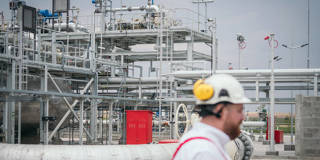No one doubts that Europe will need to increase its use of liquefied natural gas, continue burning coal over the next few years, and do more to help vulnerable communities and some industries manage higher energy costs. But how policymakers approach these tasks will be truly decisive for the long-term future.
COPENHAGEN – Russia’s war in Ukraine and the disruption of Russian gas exports to Europe has triggered an energy crunch, with price spikes unlike anything seen since 1973. And the situation will get worse before it gets better. Russian natural-gas flows to Europe are likely to be further curtailed – or even shut off – before winter, and sanctions on oil exports may soon start to bite into energy supplies, too.
The crisis is twofold. The urgency of keeping Europe warm and running through the next few winters must be considered alongside the imperative to accelerate the transition to clean energy. Many see a conflict here between the short term and the long term. But responding to the immediate energy crisis in the right way will also help to address the broader climate challenge. Authorities must both buffer the shock and accelerate the transition.
To be sure, the European countries that are most dependent on Russian gas and oil will struggle to secure power and heat for the coming winter. Gas reserves are only 65% full, and the Russian stranglehold will make it difficult and expensive to reach the European Union’s target of 80% before winter.

COPENHAGEN – Russia’s war in Ukraine and the disruption of Russian gas exports to Europe has triggered an energy crunch, with price spikes unlike anything seen since 1973. And the situation will get worse before it gets better. Russian natural-gas flows to Europe are likely to be further curtailed – or even shut off – before winter, and sanctions on oil exports may soon start to bite into energy supplies, too.
The crisis is twofold. The urgency of keeping Europe warm and running through the next few winters must be considered alongside the imperative to accelerate the transition to clean energy. Many see a conflict here between the short term and the long term. But responding to the immediate energy crisis in the right way will also help to address the broader climate challenge. Authorities must both buffer the shock and accelerate the transition.
To be sure, the European countries that are most dependent on Russian gas and oil will struggle to secure power and heat for the coming winter. Gas reserves are only 65% full, and the Russian stranglehold will make it difficult and expensive to reach the European Union’s target of 80% before winter.